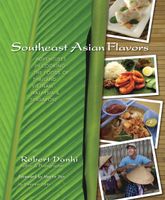Advertisement
Rhizomes
By Robert Danhi
Published 2008
Ginger is not a root; it is actually an underground stem known as a rhizome. Rhizomes represent one of the hidden secrets of Southeast Asian cooking. Originally prized for their many medicinal properties such as being antibacterial, a nausea cure, an anti-inflammatory, a digestive aid, and a cough suppressant, now rhizomes have taken chefs under their flavorful spell.
Ginger, galangal, krachai, and turmeric are a select group among the fifty perennial plants in the Zingiberaceae, or ginger, family that sport horizontal-growing, underground stems. Stems store food as roots gather it. Rhizomes can be cut into pieces, and each part will then grow into another plant. Rhizomes may look similar on the outside, yet internally each possesses an identity that is uniquely its own. One of the least commonly used yet most intriguing is asafetida (Ferula assafoetida), known as hing in Hindi. The Indian culture uses the highly aromatic, garlic-flavored dried gum resin of a rhizome from the carrot family. A small amount goes a long way, as in the coconut chutney recipe.

